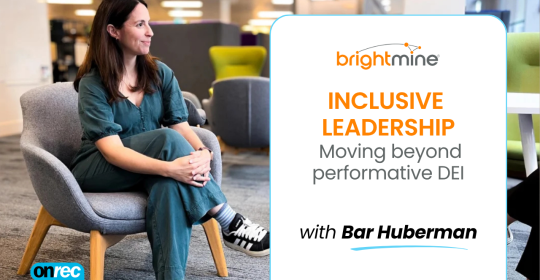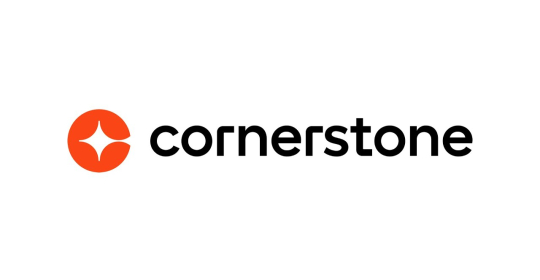Employees are a critical element of business success, but recruiting and retaining the right people can be a challenge for organisations, especially as hiring slows down and skills shortages loom large. Recent Brightmine research found that over three-quarters (77%) of organisations are struggling with skill shortages, and retaining and attracting top tier talent is now a key goal for leading businesses.
With large pay rises often unfeasible in the current climate, employee benefits have come to the fore as an essential attraction and retention tool for HR leaders. In fact, over two-thirds (68%) of organisations now prioritise employee benefits as they aim to retain staff, according to Brightmine research. But HR and reward teams need to ensure they take the right approach to their benefits strategy to generate the best results.
Staying competitive with benchmarking exercises
It’s vital that any investment in benefits is effective and delivers value for money, and that the benefits speak to the workforce. Organisations with existing benefits packages should now take steps to evaluate them to ensure that what they are delivering is tailored to current and future employee needs while remaining competitive in the wider market. For companies starting to think more about their benefits package, even those who offer the statutory minimum, a benchmarking exercise will be hugely valuable.
Benchmarking allows employers to compare their employee benefits package to those of competitors, the industry and local market, helping to reduce the risk of losing talent by aligning with, or exceeding, what other organisations are offering. The majority of organisations now see the value of doing this; Brightmine has found that 80% regularly benchmark their offering against other organisations.
Effective benchmarking, however, requires having access to the latest data sets and the ability to understand the benchmarks produced. The collation, and analysis, of large amounts of data can also hinder the process for organisations. By using benchmarking technology, businesses can ensure regularly updated information is available to shape data driven, informed changes to their benefit schemes.
Keeping abreast of market changes
Alongside a regular review of how their benefits proposition compares in the market, HR leaders should align their package with workforce demographics and trends.
Employee needs and wants can differ across generations or demographics of the workforce. As our society ages, care-related provisions are likely to be highly valued among older generations, while measures such as flexible working are also more appealing than ever before. Furthermore, cost-of-living challenges have heightened financial pressure on all employees, so any benefits – including discounted shopping schemes or financial education – that help staff to feel more in control of their finances are likely to be popular. Brightmine research shows nearly a third (30%) of businesses now offer financial wellbeing benefits to employees.
What a workforce valued ten years ago, for example, is likely to be vastly different to what employees want today, so it’s important for organisations to align with these shifting values and trends to create the most attractive benefits offering.
Embracing tailored changes
Given the diversity of our workforces, offering choice stands out as one of the most effective strategies for HR. Most organisations consist of a diverse range of employee demographics, with significant variations in terms of age, wealth and stage of life, so allowing individuals to choose the benefits that are most relevant to them means less money being wasted on underutilised benefits. It also means that employees feel better supported by their businesses, encouraging them to feel more empowered, engaged and ultimately improving productivity.
There are signs that organisations are starting to realise the value of giving employees a degree of control of their benefits package – Brightmine research shows over two-thirds (39%) currently offer some benefits on a flexible basis, and 44% offer voluntary benefits, which can be purchased by employees themselves if desired.
Rather than assuming what benefits are best, organisations are now involving employees in the decision-making process itself, with Brightmine research showing that 53% of businesses use employee surveys to gauge employees’ views on benefit packages. Manager feedback and exit interviews are also used by 35% of organisations, and focus groups by 21%, showing how employers are increasingly looking to provide benefits that are popular with the workforce.
The employee value proposition
With many employers being unable to offer significant pay rises, they are looking at how they better communicate their reward offering to employees to show the total value of their compensation, rather than just their salary. Organisations are increasingly looking at how they translate the ‘employee value proposition’ (EVP) to employees, which is the unique set of benefits and rewards the organisation offers employees. Setting all of this out, including benefits such as work-life balance initiatives and career development opportunities, alongside statutory entitlements such as annual leave and pensions, can be very beneficial and serves as a good reminder to employees on what they have access to.
Organisations with a strong EVP, including innovative branding and a compelling company ethos, can help them stand out against their competitors. Some employers are turning to total reward statements to help employees understand the value of their reward package, setting everything out in one document.
Remaining compliant
Finally, organisations need to keep on top of any legislative changes, which may impact their benefits strategy. Two relevant changes that took effect on 6th April 2024 include new rules affecting holiday entitlement and holiday pay for some workers, and various changes to flexible working legislation, including permitting employees to request flexible arrangements from day one of their employment, rather than after six months.
Budget cuts mean recruitment plans are being shelved and above-inflation pay increases are off the agenda, while a relatively tight labour market complicates the situation further. The ability to retain staff has become invaluable for employers to remain productive and competitive.
Staying on top of the latest trends, including legislative changes, and making use of benchmarking to shape data driven employee benefits propositions, will be integral moving forward. Not only will this ensure that organisations are able to navigate an increasingly challenging labour market, but the implementation of relevant benefits packages will make employees feel valued and supported, leading to better business outcomes.






